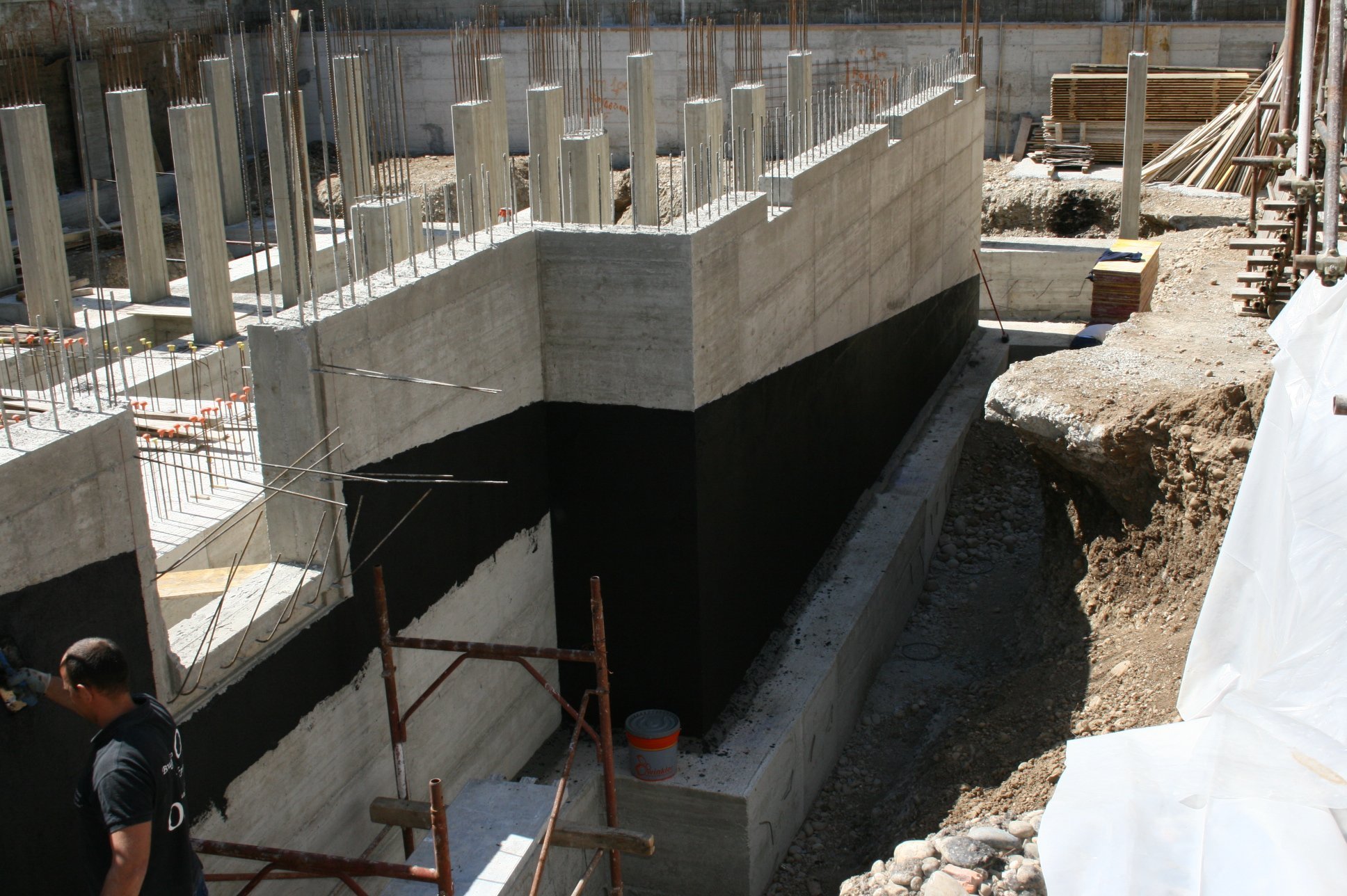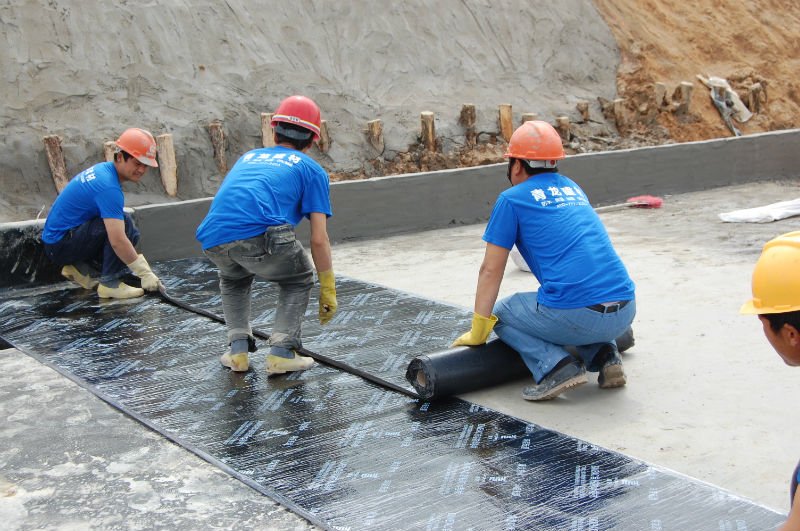Exactly How Waterproofing Works: A Comprehensive Look at Techniques and Technologies
Waterproofing is important for protecting frameworks from moisture-related damages. It involves various strategies and innovations that produce obstacles versus water intrusion. Traditional approaches, such as compacted clay, exist together with modern innovations like liquid-applied membrane layers. Comprehending the subtleties of these techniques is important for effective application. The efficiency of any kind of waterproofing option pivots not only on the strategies utilized yet additionally on continuous upkeep and evaluation. What are the vital elements that affect long-term efficiency?
Comprehending the Essentials of Waterproofing
Waterproofing is a vital procedure that safeguards structures from water breach, which can lead to considerable damage over time. This technique involves the application of numerous products and techniques designed to create an obstacle versus dampness. The primary objective is to stop water from passing through surfaces, which can trigger wear and tear, mold and mildew development, and architectural instability.Various factors influence the option of waterproofing approach, consisting of the kind of structure, its location, and environmental conditions. Comprehending the physics of water motion and the residential or commercial properties of different products is important in picking an effective waterproofing solution.Effective waterproofing not only safeguards structures but also enhances their longevity and integrity. Generally, it is integrated into the design phase of construction to guarantee comprehensive protection. As awareness of water-related issues expands, the relevance of recognizing waterproofing principles comes to be progressively clear to designers, contractors, and homeowner alike.
Typical Waterproofing Techniques
Standard waterproofing methods have been made use of for centuries, depending on tried and true techniques and products to secure structures from water damages. One of the oldest approaches includes making use of clay, which, when compressed, produces a natural obstacle against dampness. Furthermore, bitumen, a sticky, black product obtained from oil, has actually been employed for its waterproof homes, frequently used to roofings and foundations.Another technique includes the application of lime-based plasters, which provide a breathable layer that enables moisture to get away while preventing water access. Thatch roofing, a standard method still seen in some societies, offers exceptional waterproofing due to its securely loaded straw layers.Moreover, making use of rock and block has been noticeable, as these materials are naturally immune to water when effectively installed. In general, traditional waterproofing techniques emphasize the significance of picking proper materials and construction techniques to boost longevity versus water breach.
Modern Waterproofing Technologies
Developments in modern-day waterproofing modern technologies have revolutionized the way structures are shielded from water damages. Cutting-edge strategies such as liquid-applied membrane layers and innovative sealers have actually enhanced the efficiency and convenience of waterproofing solutions. These innovations permit seamless application, minimizing the risk of leakages and making sure comprehensive protection over intricate surfaces.Moreover, the combination of wise innovations, such as moisture sensing units and automated tracking systems, enables real-time assessment of waterproofing efficiency. This positive approach assists in prompt upkeep and lowers long-term repair costs.Additionally, advancements in spray-applied coatings supply quick application and superb attachment, adapting to different substratums while offering durable defense. Techniques like polymer-modified systems further boost adaptability and resilience, making them ideal for diverse atmospheres. Overall, contemporary waterproofing technologies not just reduce water breach but also add to the longevity and sustainability of structures, marking a substantial shift in the sector.
Products Utilized in Waterproofing
The efficiency of waterproofing options heavily counts on the materials made use of in their application. Different products are utilized to produce obstacles versus water access, each with special properties matched for different settings. Typically used products consist of membranes, finishes, and sealants.Liquid-applied membranes, usually made from polyurethane or acrylic, develop a smooth barrier that adjusts to complex surfaces. Sheet membrane layers, generally constructed from rubber or polycarbonate, offer resilience and are optimal web for larger areas. In addition, cementitious waterproofing products, composed of cementitious compounds, give exceptional bond and flexibility.Sealants made from silicone or polyurethane are essential for joints and joints, making certain thorough security. Moreover, sophisticated products, such as geo-composite membrane layers, combine several features, enhancing performance. Overall, the choice of waterproofing materials is crucial in attaining resilient and reliable water resistance, customized to certain job requirements and ecological conditions.
Common Applications of Waterproofing
Waterproofing plays a vital role in numerous markets, making certain the durability and stability of frameworks. Common applications consist of household options that shield homes, business framework that safeguards companies, and commercial settings that call for durable protection versus wetness. Recognizing these applications highlights the value of waterproofing in maintaining both safety and performance across various environments.
Residential Waterproofing Solutions
Lots of home owners deal with obstacles with wetness intrusion, making reliable residential waterproofing options you could look here essential. Various methods exist to address this problem, consisting of exterior and interior waterproofing systems. Interior options commonly involve the application of sealants and finishings to cellar walls, which help protect against water infiltration. Exterior techniques commonly consist of the installation of drainage systems and waterproof membranes that divert water away from the foundation.Additionally, homeowners might consider sump pumps to get rid of water buildup and dehumidifiers to regulate moisture levels. Proper grading and the use of rain gutters also play a crucial function in taking care of water circulation around the home. By carrying out these methods, home owners can considerably lower the risk of water damages and mold growth, guaranteeing a completely dry and secure living setting.

Business Facilities Security
Reliable waterproofing solutions play a vital duty in the defense of business framework. Landscape drainage Omaha. These methods are crucial for securing structures, car parking frameworks, and bridges from water damage, which can compromise architectural integrity and bring about costly fixings. Typical applications consist of the setup of membranes, coatings, and sealers that produce barriers versus moisture infiltration. Areas such as cellars, roofing systems, and exterior walls are often focused on to ensure longevity and resilience. In addition, waterproofing systems can boost energy efficiency by protecting against water-related issues that might result in mold and mildew development and degeneration. By implementing durable waterproofing measures, homeowner can protect their investments and preserve operational effectiveness, eventually adding to the general sustainability of industrial centers
Industrial Applications Overview
While various markets deal with unique obstacles, the requirement for trustworthy waterproofing remedies continues to be a consistent in commercial applications. Industries such as manufacturing, building, and power usually experience atmospheres where moisture direct exposure can endanger structural integrity and operational performance. In making facilities, waterproofing is vital for securing equipment and materials from water damage. In building, it safeguards structures and cellars against groundwater infiltration. The power industry relies upon waterproofing for the protection of devices in hydroelectric plants and overseas structures. Furthermore, food processing industries make use of waterproofing to assure health and compliance with security criteria. On the whole, effective waterproofing options are important for enhancing resilience, safety, and performance across various industrial setups.
Maintenance and Longevity of Waterproofing Solutions
Waterproofing remedies are created to provide lasting protection official website against moisture breach, normal maintenance is essential to guarantee their performance and longevity. Routine inspections play a significant role in identifying possible problems such as cracks, peeling, or signs of water damages. Addressing these troubles promptly can prevent additional degeneration and expensive repairs.Additionally, cleansing the surface of waterproofed locations helps eliminate dust and particles that can jeopardize the stability of the waterproofing obstacle. It's likewise a good idea to reapply safety finishes or sealants as suggested by makers to keep ideal efficiency. Environmental aspects, such as UV exposure and severe climate problems, can influence the life-span of waterproofing materials, making routine assessment crucial
Often Asked Inquiries
Can Waterproofing Be Applied in Cold Climate?
The inquiry of applying waterproofing in winter increases worries about attachment and healing. Several products might not carry out at their ideal in low temperature levels, demanding mindful choice and factor to consider of details standards for reliable application.
How Much Time Does Waterproofing Normally Last?
The duration of waterproofing performance differs based upon materials and ecological factors. Generally, it can last from 5 to 10 years, but regular maintenance and examinations are vital to ensure peak efficiency and longevity.
Is DIY Waterproofing Effective and Safe?
The effectiveness and safety and security of do it yourself waterproofing depend upon numerous elements, consisting of worldly top quality and application technique. While some people attain satisfactory outcomes, others may experience issues that compromise long-term defense and architectural stability.
What Are the Signs of Failing Waterproofing?
Signs of failing waterproofing consist of noticeable water spots, peeling off paint, mold and mildew development, musty odors, and dampness in wall surfaces or ceilings - Drainage & waterproofing company Omaha. These indicators recommend endangered obstacles, requiring prompt examination and prospective removal to stop further damages
How Do I Pick the Right Waterproofing Specialist?
